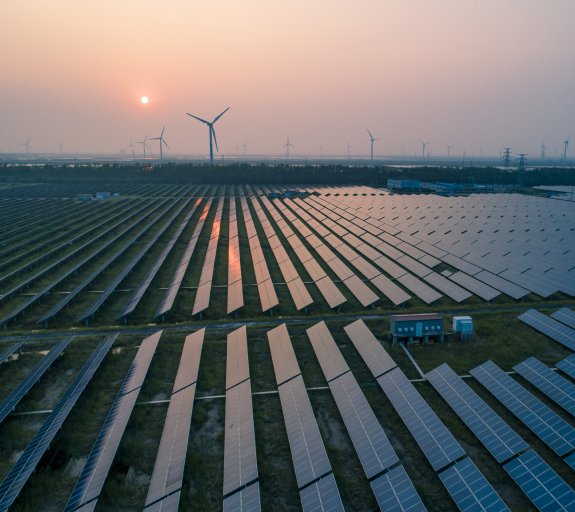
Cracking convenience: Is technology the answer to the sustainability challenge?
2018 was really the beginning of the end for plastic straws, and not a moment too soon. While it is an important step in the right direction, when it comes to single use plastic, it is just a drop in the rapidly warming ocean.
It is also a good example of the power and importance of convenience, when it comes to tackling the sustainability challenge, and the viability of the circular economy.
Most people trace the start of ‘anti-straw’ sentiment to a video of a sea turtle having one removed from its nose that went viral in 2015. Since then it has become seen by many environmental groups as an easy example to rally around that has helped to propel environmental issues up the global agenda.
Part of the reason for this is that, while many decisions around man-made climate change can take years, if not decades to get onto the legislative agenda, because of a complex web of competing interests, here the calculus was clear.
For companies, the cost of moving from plastic to paper straws, while significant in percentage terms, was unlikely to make a significant dent to their bottom line.
According to one manufacturer, paper straws cost around two and a half cents, as opposed to half a cent per plastic one.1This shift from a very cheap to merely cheap was worth it, if it meant mitigating the risk of having your brand associated with killing sea turtles.
For consumers, plastic straws are an almost entirely unnecessary convenience.
The UK alone uses around 4.7bn plastic straws annually2 – and, when one considers that there are already over 150 million tonnes of plastic in the world’s oceans and every year around one million birds and over 100,000 sea mammals die from eating or getting tangled in plastic waste3 they are an easy convenience to live without.
For politicians, with both business and the public largely on board, it is an easy win.
But what of other single use plastics and recycling more generally? This is where things start to get trickier, especially as recycling remains in its infancy.
It is estimated that around 6.3bn metric tonnes of plastic waste have been created to date. And, of that, only around 9% has ever been recycled, while 12% has been incinerated. The remaining 79% can be found in landfills and the environment4. But, recent research published in the Journal of Industrial Ecology5 has shown that if we are to start making a dent in the volume of plastic used globally and this goes for other materials too like metals and glass, recycling alone is not enough. In fact, the study argues that recycling only really benefits the environment in the long term if it results in fewer new products being created, rather than just deferring the point at which the waste ends up in a landfill.
This brings us again to convenience. The will to recycle and reduce our impact to the planet is there, the gravity created by the convenience and cleanliness of the modern linear economy is almost inescapable. We may recycle our disposable razors, for example, but only an ardent few will once again start using a steel cut-throat razor they have had to sharpen themselves. Equally, while we are prepared to carry a canvas tote bag to the grocery store instead of buying another plastic one, very few people are likely to seek out local farms themselves, to better source their vegetables.
To change the consumer mindset, corporates will need to rethink the ways in which they design and package products. At the same time, consumption patterns will need to change. Some have called for the return to the old ‘milkman’6 model, where businesses deliver products to your door and pick up the empty containers, which can then be reused many times, reducing the demand for new containers.
In a world of almost eight billion people, fast-growing emerging economies and a web of transnational connections, from supply chains to trade treaties, the reality is a great deal more complex than a return to a village milkman. But, what is encouraging is that increasingly firms are beginning to take up the challenge.
This has been driven by two major shifts globally. The first is technological. From the internet of things and mass personalisation, to automated factories and machine learning and high-tech vision systems, companies have well and truly cracked convenience.
The second, is demographics. There a growing awareness that globally people are going to live for longer and, increasingly, younger generations are beginning to move into decision making roles. As a result, not only do companies have an increased ability to tackle the challenge, there is a growing demand for solutions from their customers. All of which bodes well for the future.
- https://www.cnbc.com/2018/07/09/paper-straws-are-better-for-the-environment-but-they-will-cost-you.html
- https://www.gov.uk/government/news/government-launches-plan-to-ban-plastic-straws-cotton-buds-and-stirrers
- https://www.gov.uk/government/news/government-launches-plan-to-ban-plastic-straws-cotton-buds-and-stirrers
- https://www.ncbi.nlm.nih.gov/pmc/articles/PMC5517107/
- https://onlinelibrary.wiley.com/doi/full/10.1111/jiec.12808
- https://www.weforum.org/agenda/2019/01/loop-s-launch-brings-reusable-packaging-to-the-world-s-biggest-brands/

Clean Tech
Innovative companies are creating solutions to address pressures on scarce natural resources and the need for greenhouse gas emission reduction.
Find out moreDisclaimer
This document is for informational purposes only and does not constitute investment research or financial analysis relating to transactions in financial instruments as per MIF Directive (2014/65/EU), nor does it constitute on the part of AXA Investment Managers or its affiliated companies an offer to buy or sell any investments, products or services, and should not be considered as solicitation or investment, legal or tax advice, a recommendation for an investment strategy or a personalized recommendation to buy or sell securities.
It has been established on the basis of data, projections, forecasts, anticipations and hypothesis which are subjective. Its analysis and conclusions are the expression of an opinion, based on available data at a specific date. All information in this document is established on data made public by official providers of economic and market statistics. AXA Investment Managers disclaims any and all liability relating to a decision based on or for reliance on this document. All exhibits included in this document, unless stated otherwise, are as of the publication date of this document. Furthermore, due to the subjective nature of these opinions and analysis, these data, projections, forecasts, anticipations, hypothesis, etc. are not necessary used or followed by AXA IM’s portfolio management teams or its affiliates, who may act based on their own opinions. Any reproduction of this information, in whole or in part is, unless otherwise authorised by AXA IM, prohibited.